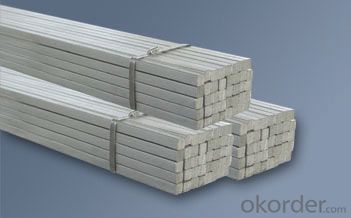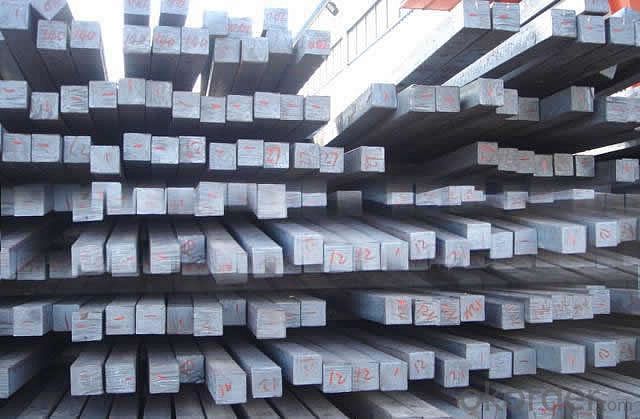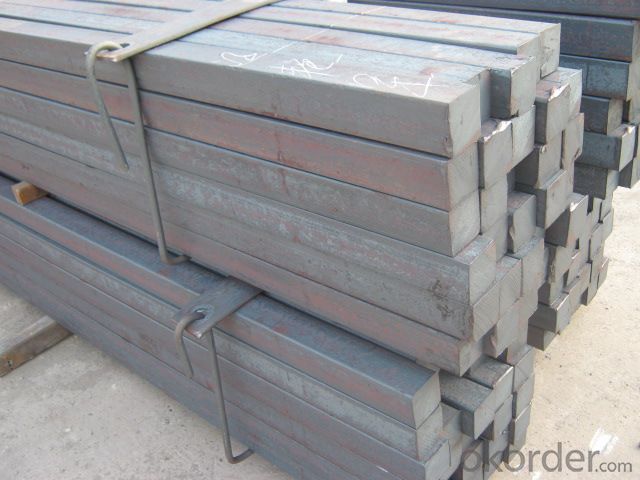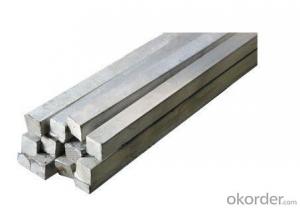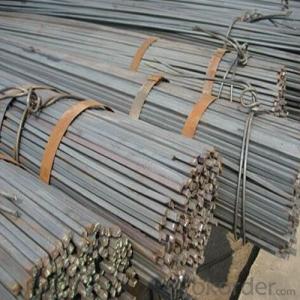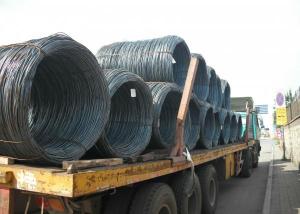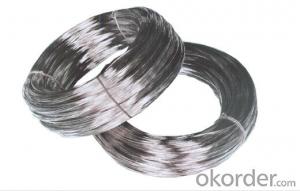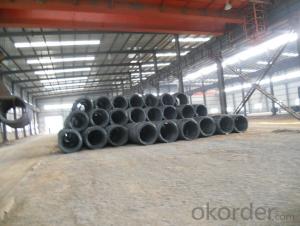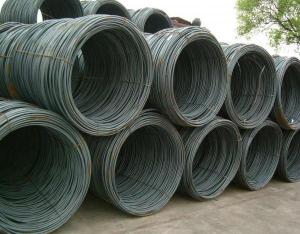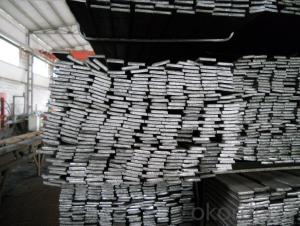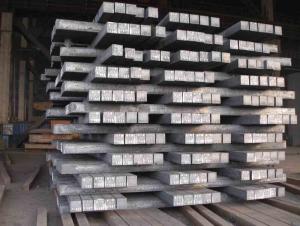14mm 12mm stainless steel wire rod wire rod
- Loading Port:
- Tianjin
- Payment Terms:
- TT or LC
- Min Order Qty:
- 25 m.t.
- Supply Capability:
- 10000 m.t./month
OKorder Service Pledge
OKorder Financial Service
You Might Also Like
Product Description:
OKorder is offering 14mm 12mm stainless steel wire rod wire rod at great prices with worldwide shipping. Our supplier is a world-class manufacturer of steel, with our products utilized the world over. OKorder annually supplies products to European, North American and Asian markets. We provide quotations within 24 hours of receiving an inquiry and guarantee competitive prices.
Product Applications:
14mm 12mm stainless steel wire rod wire rod are ideal for structural applications and are widely used in the construction of buildings and bridges, and the manufacturing, petrochemical, and transportation industries.
Product Advantages:
OKorder's 14mm 12mm stainless steel wire rod wire rod are durable, strong, and resist corrosion.
Main Product Features:
· Premium quality
· Prompt delivery & seaworthy packing (30 days after receiving deposit)
· Corrosion resistance
· Can be recycled and reused
· Mill test certification
· Professional Service
· Competitive pricing
Product Specifications:
square steel billet
1.3SP, 5SP
2.terms of payment: L/C at sight
3.size: 120*120mm
4.length: 5.8~12m
square steel billet
Specifications
square steel billets
1)We procure world class quality steel billets which meets the specific requirements of the clients
The Billets produced by the company can be broadly divided into three main types i.e.
M.S. Billets
CRS Billets
Special Alloy Billets
M.S. Billets are used for rolling of TMT Re-Bars of Fe415 and Fe500 Grade and various other structural steel products.
CRS Billets are used fro rolling of CRS TMT Re-Bars.
Special Alloy Billets are used for rolling of any special grade TMT Re-Bars like Earthquake resistant TMT Re-Bars and for special grade structural steel products.
The following are the sizes of Billets available with Shyam Steel Industries Ltd.:
100 X 100
120x120
150 X 150
Physical Properties:
Description
As per IS 2830
Shyam Billets
Bend (max.) 5 mm per meter >= 5 mm per meter
Carbon (max.) 3mm per meter >= 3 mm per meter
Length 3 mt - 13 mt 3 mt - 9 mt
Chemical Properties:
Ladle Analysis:
Designation
Carbon
Manganese
C15 0.12-0.18 0.30-0.60
C18 0.15-0.21 0.30-0.60
C20 0.17-0.23 0.30-0.60
C15 MMn 0.12-0.18 0.60-1.00
C18 MMn 0.15-0.21 0.60-1.00
C20 MMn 0.17-0.23 0.60-1.00
C15 HMn 0.12-0.18 1.00-1.50
C18 HMn 0.15-0.21 1.00-1.50
C20 HMn
0.17-0.23 1.00-1.50
Billets of different designations are manufactured in three different grades namely A, B, C having sulphur, phosphorous content (on ladle analysis) and carbon equivalent as follows:
Chemical Analysis:
Grade Sulphur Phosphorous Carbon Equivalent (CE)1
Max Max Max
A 0.05 0.05 0.42
B 0.045 0.045 0.41
C 0.04 0.04 0.39
FAQ:
Q1: How do we guarantee the quality of our products?
A1: We have established an advanced quality management system which conducts strict quality tests at every step, from raw materials to the final product. At the same time, we provide extensive follow-up service assurances as required.
Q2: What makes stainless steel stainless?
A2: Stainless steel must contain at least 10.5 % chromium. It is this element that reacts with the oxygen in the air to form a complex chrome-oxide surface layer that is invisible but strong enough to prevent further oxygen from "staining" (rusting) the surface. Higher levels of chromium and the addition of other alloying elements such as nickel and molybdenum enhance this surface layer and improve the corrosion resistance of the stainless material.
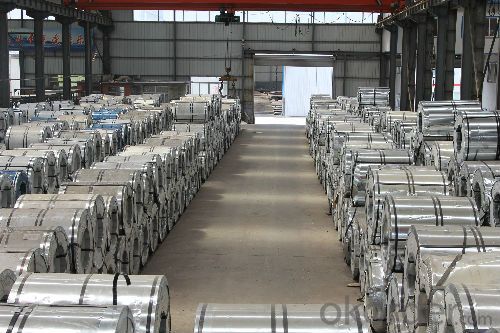
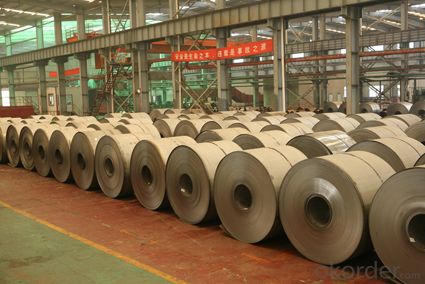

- Q: What are the different techniques for using a steel square in welding?
- There are several techniques for using a steel square in welding that can help ensure accurate and precise measurements and angles in the welding process. Some of these techniques include: 1. Checking angles: A steel square can be used to check the accuracy of angles before and after welding. By placing the square against the joint, welders can ensure that the angles are square (90 degrees) or match the desired angle. 2. Layout and marking: Steel squares are excellent tools for laying out and marking lines on the workpiece. They can be used to create straight lines, mark reference points, or transfer measurements accurately. 3. Squaring up corners: Before welding, it is crucial to ensure that corners are properly aligned and squared. A steel square can be placed against the corners to check if they are square, allowing adjustments to be made before welding. 4. Aligning fixtures and jigs: When setting up fixtures or jigs for welding, a steel square can be used to ensure proper alignment. It can be placed against the fixture or jig to check if it is square or parallel, making adjustments as needed. 5. Measuring and transferring dimensions: Steel squares have precise markings along their edges, allowing welders to measure and transfer dimensions accurately. This is especially useful when aligning or fitting pieces together before welding. 6. Checking for distortion: After welding, a steel square can be used to check for any distortion or warping in the workpiece. By placing the square against the welded joint, any irregularities can be easily identified and corrected. In summary, a steel square is a versatile tool in welding that can help with layout, alignment, measuring, and checking angles. By utilizing these techniques, welders can ensure the accuracy and quality of their work.
- Q: How do you use a steel square to determine the width of a cabinet door?
- In order to determine the width of a cabinet door using a steel square, it is crucial to ensure the proper alignment and perpendicularity of the steel square with the door's edge. Begin by positioning the steel square against the door's edge, ensuring that one of its arms is in complete alignment with either the top or bottom of the door. Next, utilize the other arm of the square to extend across the face of the door, thereby measuring its width. It is imperative to guarantee that the square is perfectly aligned with the edge and that the arm remains parallel to the door's edge. Once you have obtained the desired width measurement, accurately mark it on the door for precise cutting or future reference. Remember to employ the square's edge as a guide for meticulous measurements, thus ensuring the door attains a perfect squared shape.
- Q: How do you use a steel square to find angles for scribe cuts?
- To use a steel square to find angles for scribe cuts, you need to follow a few steps. Firstly, ensure that your steel square is clean and in good condition. This will ensure accurate measurements. Next, place the square against the edge of the material you want to make the scribe cut on, with one side of the square parallel to the edge. Then, adjust the position of the square until the other side of the square aligns with the desired angle for the scribe cut. Once the square is in position, use a pencil or scribe to mark a line along the edge of the square. After marking the line, remove the square and double-check the line you marked to ensure it is straight and accurate. Finally, you can proceed to make the scribe cut along the marked line using a suitable cutting tool. Using a steel square in this way allows you to easily find and transfer angles for scribe cuts, ensuring precise and clean results.
- Q: What are some common techniques for using a steel square in roofing?
- Some common techniques for using a steel square in roofing include determining roof pitch, measuring and marking angles for cuts, and laying out roof rafters and trusses. The steel square is a versatile tool that helps roofers ensure accurate and precise measurements and angles during the roofing process.
- Q: The moment 2mm thick galvanized square steel tube using what welding methods
- Let's use pressure welding! Gas welding and AC welder put the welding wear. Satisfactory adoption
- Q: How do you use a steel square for marking and cutting bridle joints?
- Achieving accurate and precise measurements when marking and cutting bridle joints using a steel square involves the following steps: 1. Prioritize cleanliness and ensure the steel square is free from debris and rust. This will aid in achieving accurate measurements. 2. Utilize a measuring tape or ruler to measure and mark the desired width and depth of the bridle joint on the wood. The width of the joint should be half the thickness of the wood, while the depth can vary depending on project requirements. 3. Align the steel square with the marked lines for the width and depth of the joint. Press the square firmly against the wood to prevent any movement or slippage. 4. Employ a marking knife or pencil to trace along the edge of the steel square, creating a clear and accurate guideline for cutting the bridle joint. Taking the time to ensure straight and precise lines is crucial. 5. With the lines marked, carefully cut along the traced lines using a saw or chisel. Employing sharp and suitable tools is essential for achieving clean and accurate cuts. 6. After cutting the bridle joint, use the steel square once again to verify the accuracy and squareness of the joint. Place the square against the cut edges to confirm they are perfectly perpendicular to the wood's face. At this stage, any necessary adjustments can be made to achieve a precise fit. Overall, a steel square is a vital tool for accurately and efficiently marking and cutting bridle joints. By following these steps, you can attain clean and precise joints that enhance the strength and appearance of your woodworking projects.
- Q: How do you use a steel square to draw perpendicular lines?
- To use a steel square to draw perpendicular lines, you will need to follow a few simple steps. First, place the steel square on your drawing surface with one edge resting against the starting point of the line you want to draw. Make sure the edge of the square is aligned with the reference line or the edge of the paper. Next, hold the square firmly in place and position your pencil against one of the edges of the square. Ensure that the tip of the pencil is touching the paper. Then, while keeping the square steady, carefully slide the pencil along the edge of the square, drawing a straight line. This line will be perpendicular to the reference line or the edge of the paper, thanks to the right angle formed by the steel square. You can repeat this process for drawing multiple perpendicular lines, always starting with the square positioned correctly and maintaining the alignment as you draw each line. Remember to double-check the alignment of the square and adjust if necessary to ensure accurate perpendicular lines. With practice, you will be able to use a steel square effectively for drawing perpendicular lines in your projects.
- Q: Can a steel square be used for measuring the depth of a foundation?
- No, a steel square is not typically used for measuring the depth of a foundation. A more suitable tool for this purpose would be a measuring tape or a laser level.
- Q: How do you use a steel square to ensure the correct angle for a mitered corner joint?
- To use a steel square for a mitered corner joint, you would place the square against the corner with one arm flush against one side and the other arm against the adjoining side. This will help you determine if the angle is a perfect 90 degrees or if it needs adjustment.
- Q: How do you use a steel square for marking and cutting angled finger joints?
- To use a steel square for marking and cutting angled finger joints, place the square against the edge of the wood and align it with the desired angle. Use a pencil to mark along the edge of the square, creating a straight line. Repeat this process for all the necessary cuts. Then, carefully cut along the marked lines using a saw, ensuring to maintain the angle indicated by the square. The steel square serves as a guide to ensure accurate marking and cutting of angled finger joints.
Send your message to us
14mm 12mm stainless steel wire rod wire rod
- Loading Port:
- Tianjin
- Payment Terms:
- TT or LC
- Min Order Qty:
- 25 m.t.
- Supply Capability:
- 10000 m.t./month
OKorder Service Pledge
OKorder Financial Service
Similar products
Hot products
Hot Searches
Related keywords



